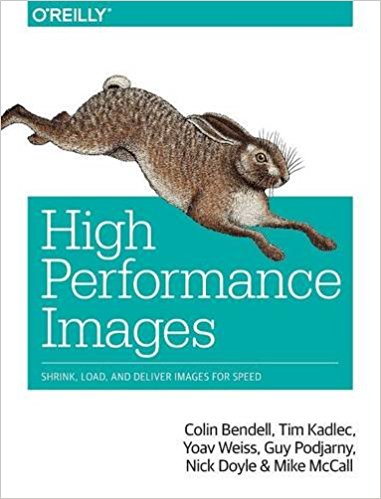High Performance Images: Shrink, Load, and Deliver Images for Speed
Here’s my short review of the “High Performance Images” book, co-written by Colin Bendell, Tim Kadlec, Yoav Weiss, Guy Podjarny, Nick Doyle, and Mike McCall.
 High Performance Images
High Performance Images
Images are everywhere on the web, be it on our websites (banner/hero image, background images, logos, photos of your products, profile pictures for your users, …) or in your mobile applications, which often downloads their images from the web.
In this book, you’ll read how images are represented when they are stored on disk or transmitted via a network or to be displayed on screen. You’ll learn about image formats: which ones are lossy, which ones are lossless and what does it mean and what vector images are and how you can use them. You will find out some formats (like JPEG or GIF or PNG) work everywhere while others (like WebP) only work in some browsers. And you’ll see images can be compressed in different ways, leading to faster loading and users being able to enjoy them sooner.
The books also explains how images are loaded by web browsers, how their preloaders works and what differences and evolutions HTTP/2 brings. It covers the new <picture> element and srcset attribute, especially in a context of responsive images. There is also a chapter about images processing (how much memory do images use in the browser? Is the GPU involved and when?) and another one about images consolidation (you may have heard about CSS sprites?).
And there are still a few other interesting chapters in this book ;-). If you are working on websites or applications, you probably want them to run fast: for your users, every millisecond has its impact on their usage of your product. If those websites or applications display more than a couple of images, chances are you can do a lot of optimizations. And you will learn a lot about this huge subject reading this book!
→ 5⁄5 “High Performance Images” is quite long, but it’s because it covers a lot of fields. I thought I knew much about images before reading this book, but I still learned many things! Really, it was a nice investment of time, and I would say “read it!” to anyone who works on large websites with many images – and who cares about their users.
